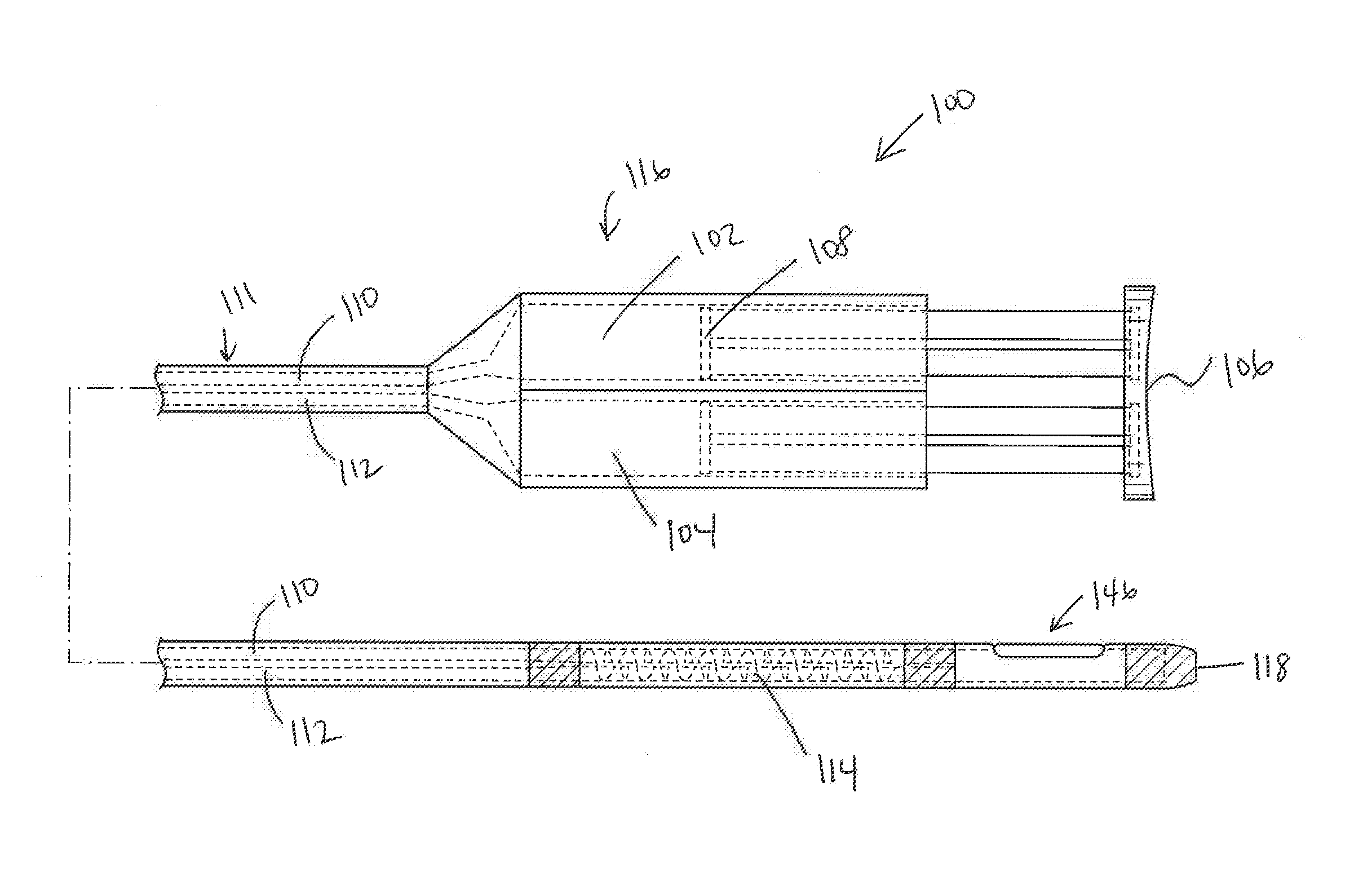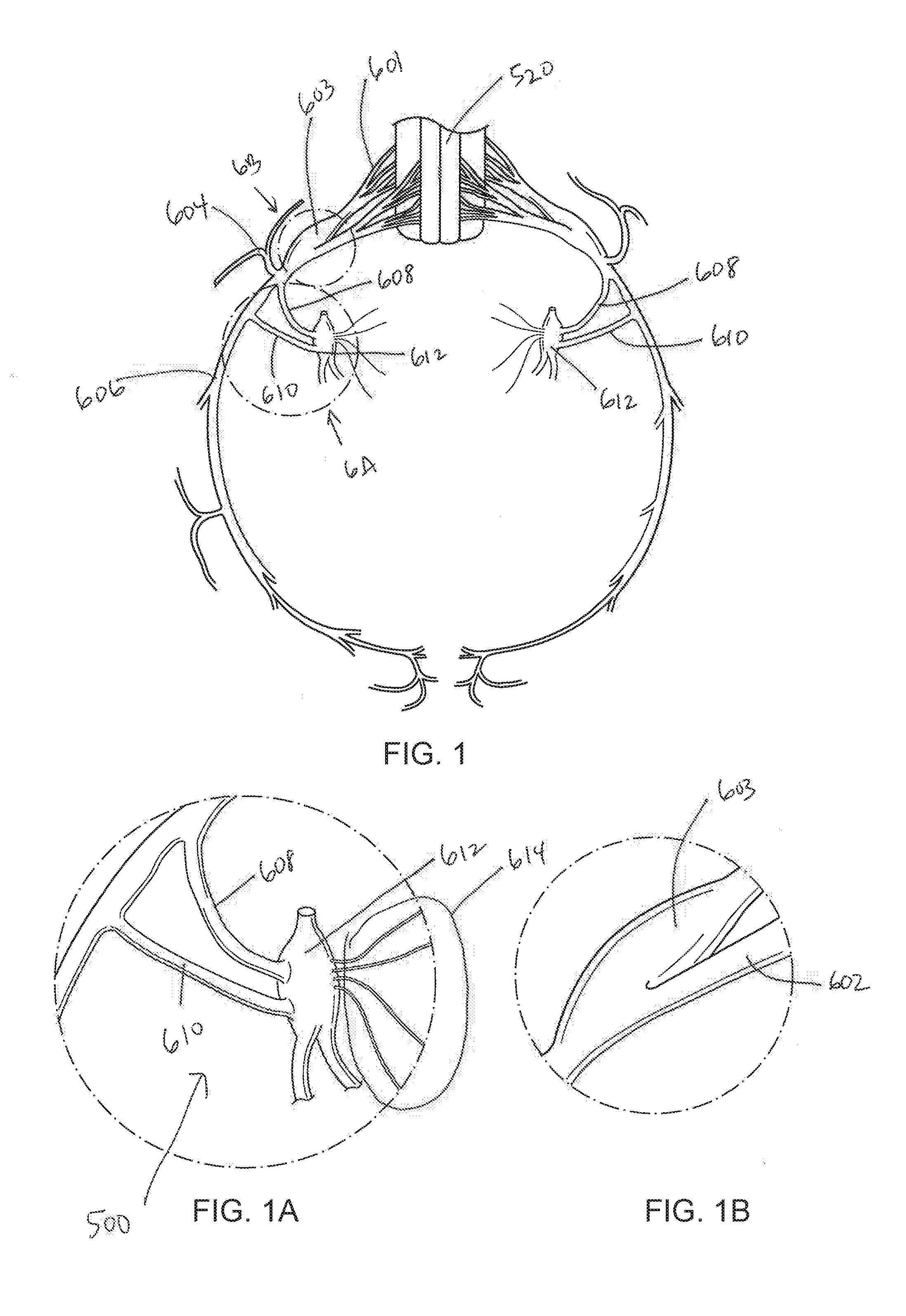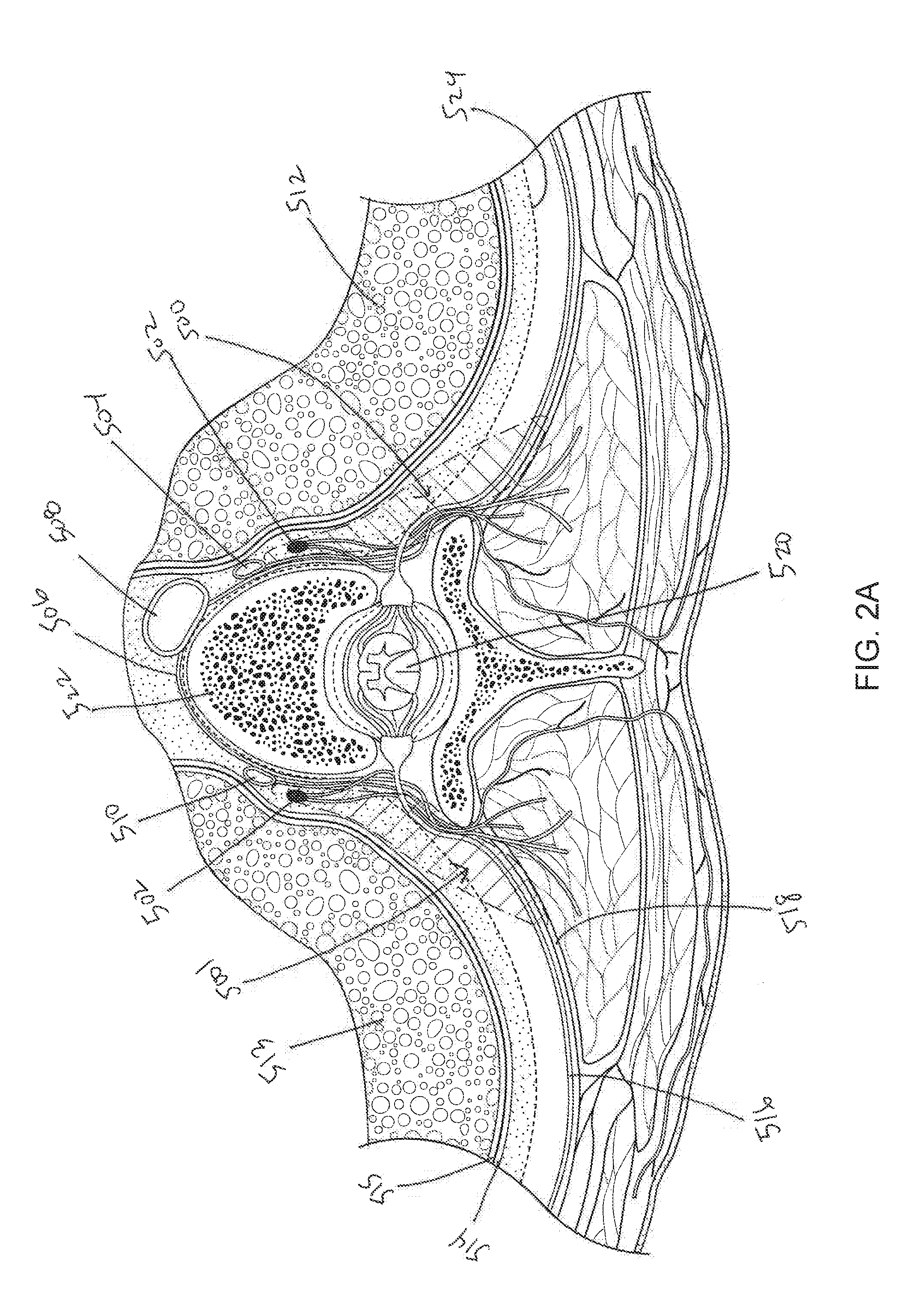Systems and methods for sympathetic cardiopulmonary neuromodulation
a neuromodulation and sympathetic technology, applied in the field of systems and methods for sympathetic neuromodulation, can solve the problems of not clear how to prevent the development of asthma, the care of asthma patients costs over $18 billion of healthcare resources each year, and the overall cost of the healthcare system is higher, so as to prevent or block the release of norepinephrine
- Summary
- Abstract
- Description
- Claims
- Application Information
AI Technical Summary
Benefits of technology
Problems solved by technology
Method used
Image
Examples
example 1
[0462]Sustained release. HA was conjugated to 4-arm PEG-amine (10 kDa) with 1-ethyl-3-(3-dimethlaminopropyl)-carbodiimide hydrochloride as a cross linker at a 100:1 ratio. Reserpine crystals were then incorporated into the HA / PEG hydrogel at a loading level of 150 μg in 10 ml hydrogel. When injected into the subcutaneous space, the reserpine was released at 15% within the first 1 hour, 50% within 6 hours, 80% at 18 hours and 100% at 24 hours.
example 2
[0463]In another embodiment, NETS-ester activated chondroitin sulfate is crosslinked with 6-arm PEG amine. After an initial burst of 15% of the drug loading, the reserpine is mixed in to release approximately 20-50 μg per day from the hydrogel for 3 to 4 weeks.
example 3
[0464]In one embodiment, NGF is delivered from an in situ forming thermosensitive hydrogel, such as PEG-PCL-PEG or heparin-poloxamer (HP) gel such as those used for delivering NGF to the spinal cord to treat spinal cord injury in rats (PMID 26472614). Additional hydrophilic and hydrophobic polymeric additives, such as PVA, PEG or PCL can be added to vary gel concentration or drug release. In another embodiment, NGF is released from a crosslinked 20 kDa 4-arm PEG homopolymer. The larger size of the molecular delivered permits the sustained release of NGF without any additional additives.
PUM
| Property | Measurement | Unit |
|---|---|---|
| Volume | aaaaa | aaaaa |
| Volume | aaaaa | aaaaa |
| Volume | aaaaa | aaaaa |
Abstract
Description
Claims
Application Information
 Login to View More
Login to View More - R&D
- Intellectual Property
- Life Sciences
- Materials
- Tech Scout
- Unparalleled Data Quality
- Higher Quality Content
- 60% Fewer Hallucinations
Browse by: Latest US Patents, China's latest patents, Technical Efficacy Thesaurus, Application Domain, Technology Topic, Popular Technical Reports.
© 2025 PatSnap. All rights reserved.Legal|Privacy policy|Modern Slavery Act Transparency Statement|Sitemap|About US| Contact US: help@patsnap.com



